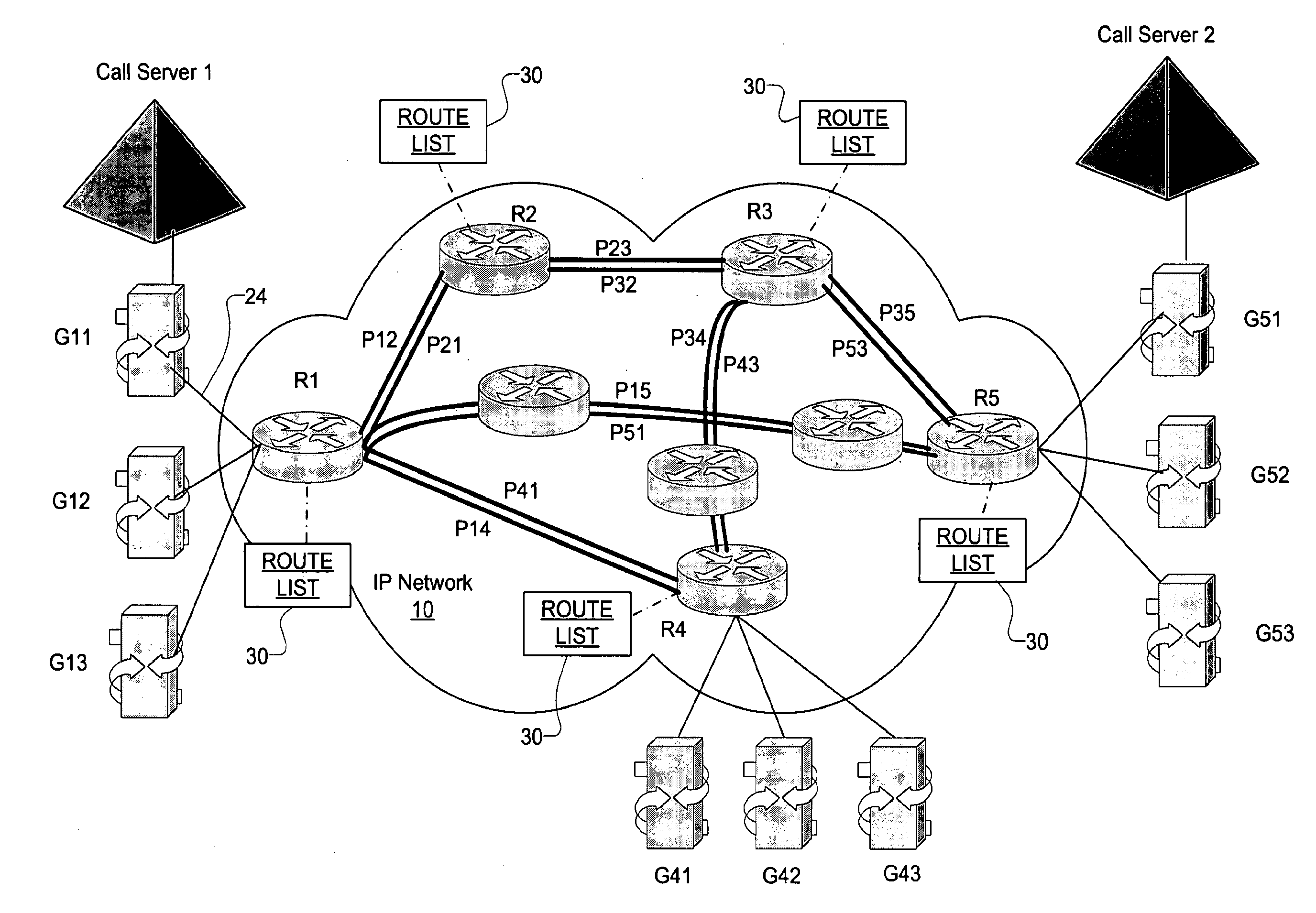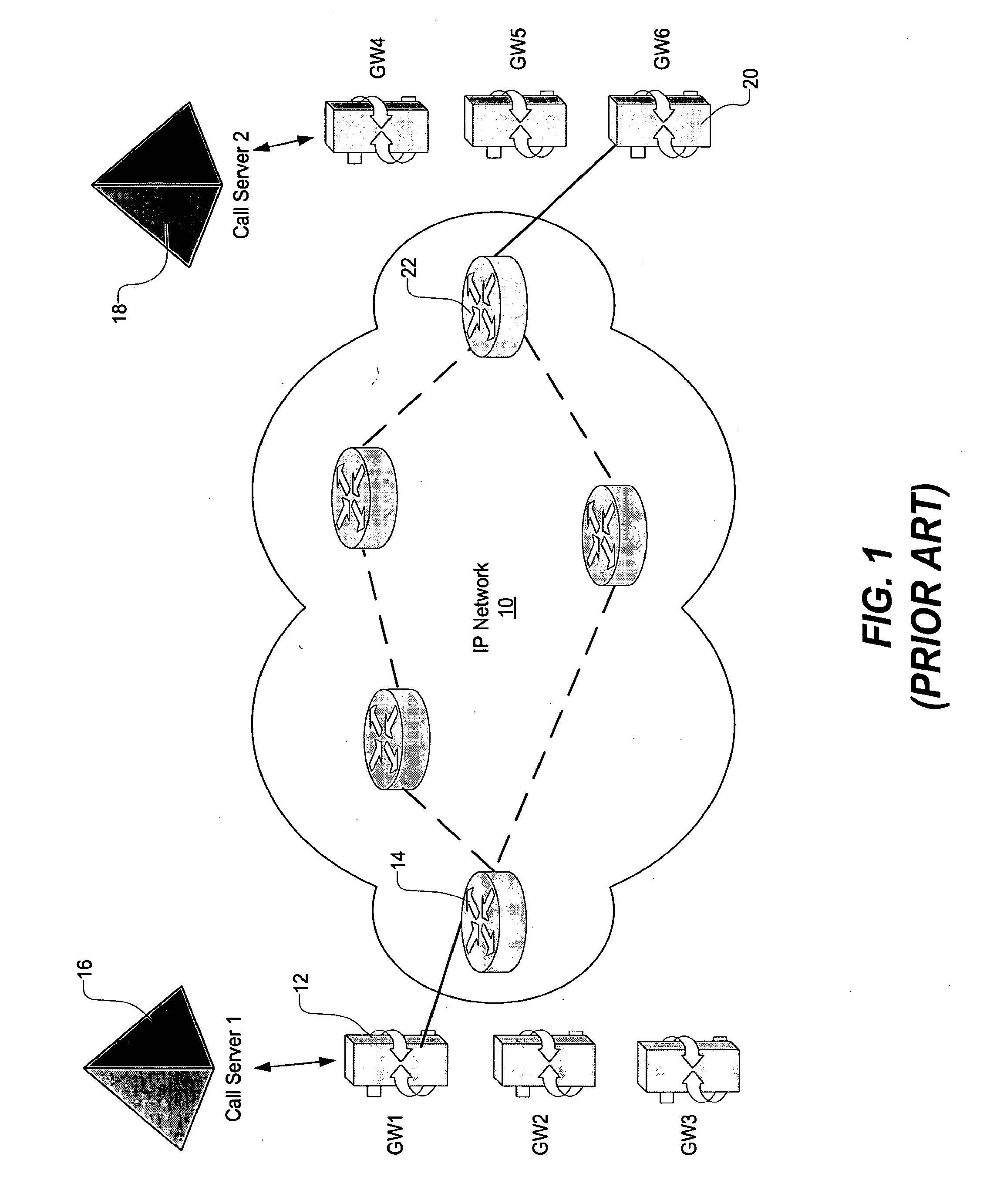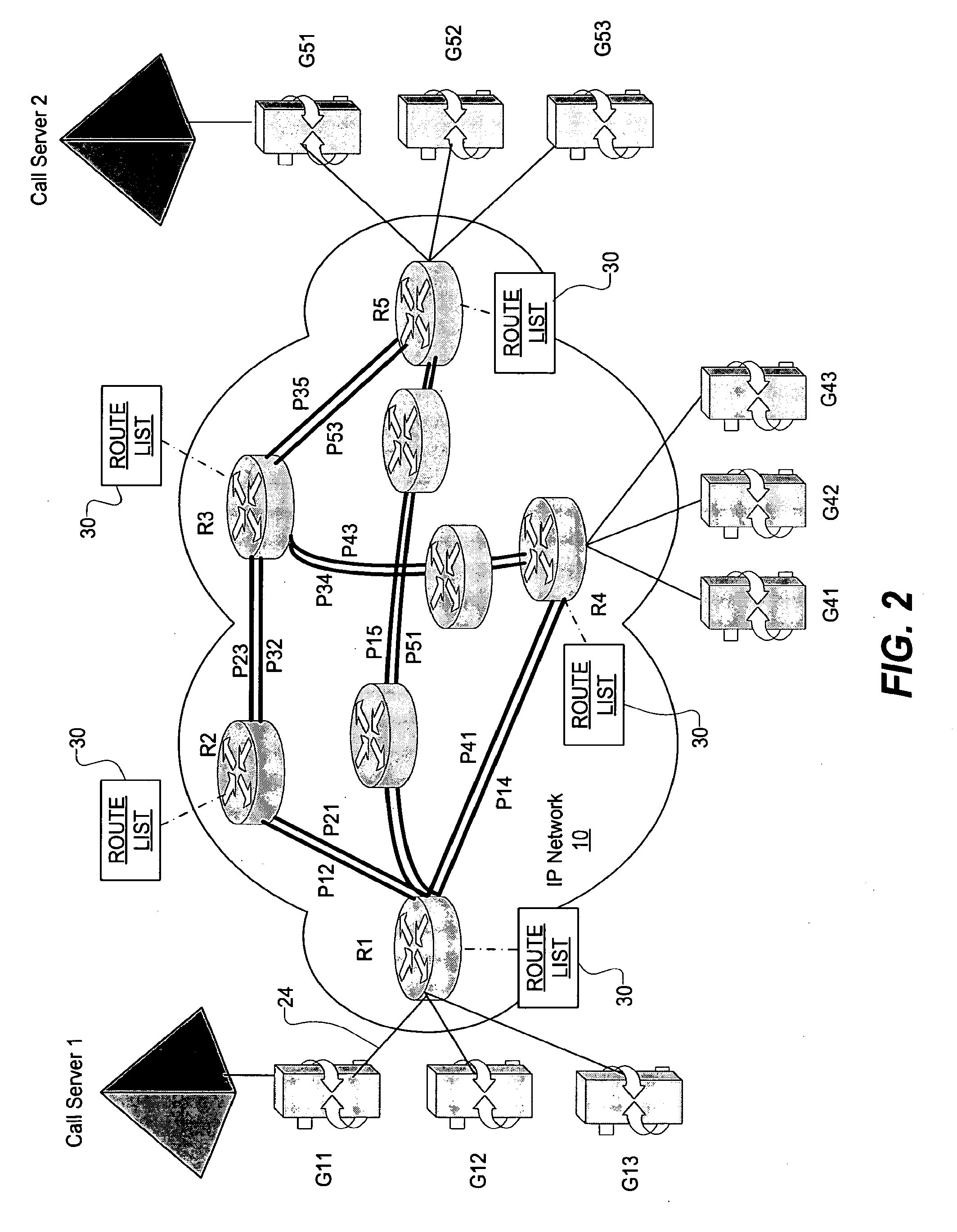Adaptive call routing in IP networks
a call routing and ip network technology, applied in the field of packet networks, can solve the problems of inability to influence the choice of a path from the edge router to the destination gateway, traffic and available bandwidth generally not managed optimally,
- Summary
- Abstract
- Description
- Claims
- Application Information
AI Technical Summary
Benefits of technology
Problems solved by technology
Method used
Image
Examples
Embodiment Construction
[0015]In accordance with a preferred embodiment of the present invention, as shown in FIG. 2, a virtual network is constructed from an IP (Internet Protocol) packet network 10 to include voice gateways, call servers, edge routers connected to the voice gateways, and LSPs (Label Switched Paths) between the edge routers defining the tunnels of the virtual network.
[0016]As is known in the art, a Label Switched Path (LSP) is a path or virtual tunnel through an MPLS (Multi-Protocol Label Switching) network that begins at an originating edge router and ends at a destination edge router (and optionally traverses one or more core routers connected together by links). As is known, the path is typically set up using a signaling protocol such as LDP, RSVP-TE, or CR-LDP. At the beginning of the path, a Label Edge Router (LER) or simply an “edge router” prepends a label a packet based on the appropriate FEC (Forwarding Equivalence Class). The edge router then forwards the packet to the next rout...
PUM
 Login to View More
Login to View More Abstract
Description
Claims
Application Information
 Login to View More
Login to View More - R&D
- Intellectual Property
- Life Sciences
- Materials
- Tech Scout
- Unparalleled Data Quality
- Higher Quality Content
- 60% Fewer Hallucinations
Browse by: Latest US Patents, China's latest patents, Technical Efficacy Thesaurus, Application Domain, Technology Topic, Popular Technical Reports.
© 2025 PatSnap. All rights reserved.Legal|Privacy policy|Modern Slavery Act Transparency Statement|Sitemap|About US| Contact US: help@patsnap.com



